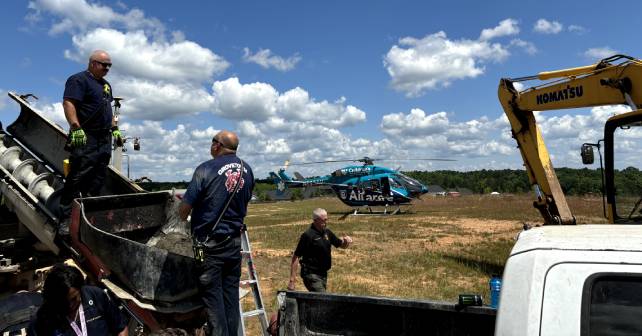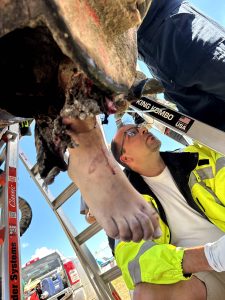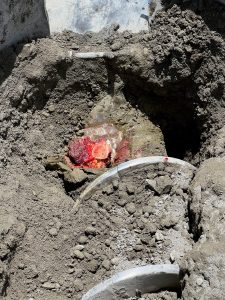
EMS and Fire are called to a new development construction site for a 22-year-old male who is possibly entrapped in a concrete machine. Prior to arrival, a bystander placed a belt on the patients legs, as a makeshift tourniquet. Upon arrival, they find a young male partially standing up inside the hopper of a concrete curb laying machine. Further investigation reveals his right leg was stuck in the auger of this machine with his mangled foot sticking out of the chute at the bottom. The fire crew requested a heavy rescue for additional resources. The EMS crew placed a second tourniquet, began two large bore IVs, and started intravenous fluids. Additionally, they called for an EMS helicopter for transport.
Explore This Issue
ACEP Now: Vol 43 – No 11 – November 2024The Level 1 trauma center, Wellstar MCG Health, dispatched its EMS helicopter AirCare, but also made a request for their EMS physician response vehicle to respond. Three EMS physicians happened to be in a conference and available. Both AirCare and the EMS physician team arrived on scene within 30 minutes. Prior to their arrival, the fire department had commandeered a construction excavator and a heavy equipment operator to set up a lift to pull the patient out. The articulating arm was moved above the patient and a harness and rigging was attached to secure the patient in preparation to lift him out of the concrete machine.
Assessment
When the physician team arrived, AirCare had just landed and was performing their assessment. A quick scene size-up found the patient to be awake and alert, but tachycardic in 130s, respirations in 20s on RA, systolic blood pressure 90s, shock index of 1.4, and diaphoretic. The patient’s foot, noted to be a complete fracture dislocation of ankle joint and three-quarters amputated, was only being held by soft tissue. There was no palpable pulse and capillary refill time was greater than five 5 seconds; however, the patient had two tourniquets in place at this point.
A quick discussion with rescue personnel revealed that the machine could not be put in reverse safely and that the machinery could not be taken apart in a timely fashion. The three physicians on scene concurred that the patient was not stable (initially given IV fluids with improvement in blood pressure, but now hypotensive), and his foot would need to be amputated. Simultaneously there was a request for the AirCare crew to give whole blood, tranexamic acid, and Ancef.
Pages: 1 2 3 4 | Single Page






2 Responses to “Case Report: Foot Amputation in the Field”
December 2, 2024
Kyle JaschenGreat read Dr. Burgbacher! Any issues with the saw getting thru the femur? Was it battery powered or corded? How long and what type was the blade?
January 15, 2025
Joseph EndemanoNo problem getting through the femur. A reciprocating saw (sawzall) was used from one of the fire engines on scene.